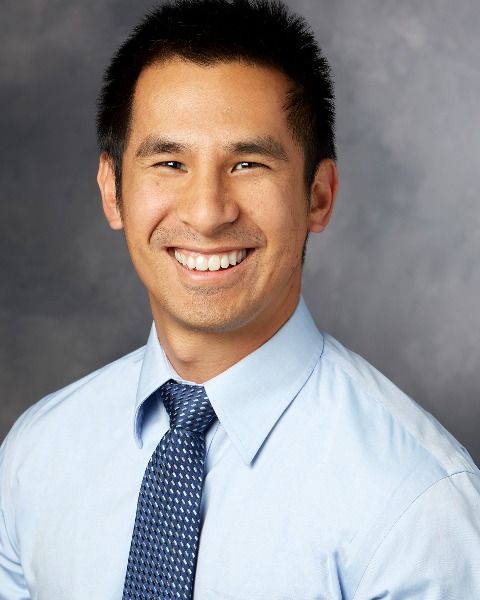Bone Tumors and Orthopedics
(P 122) INTERVAL-COMPRESSED CHEMOTHERAPY FOR TREATMENT OF EWING SARCOMA IN ADULTS: A SINGLE INSTITUTION STUDY

Ellen Zhang, MD
Medicine Resident
Stanford Health Care
Palo Alto, California, United States
Nam Q. Bui, MD
Clinical Assistant Professor
Stanford University
Stanford, California, United States
Author(s)
Co-Author(s)
Objective: Ewing sarcoma is predominantly a pediatric malignancy, and its occurrence in adults (>18 years) is rare and associated with poorer outcomes. Given absence of adult-specific clinical trials, chemotherapy regimens in adults are derived from pediatric protocols. This study evaluates the impact of chemotherapy cycle number and interval on overall survival in adults with Ewing sarcoma.
Methods: We retrospectively reviewed adults with biopsy-confirmed Ewing sarcoma. Patients were stratified by age (≥40 as older, < 40 as younger). Chemotherapy was grouped by cycle count: >9 as prolonged, ≤9 as abbreviated. Outcome analysis included only those with localized disease.
Results: Of 95 patients, mean (range) was 36.9 (18-73) years at diagnosis. Overall, 44 (46.3%) patients were female and majority were White (55.8%). The most common primary Ewing sarcoma locations were abdomen/pelvis (67.3%) and extremities (38.5%). All were treated with chemotherapy: alternating vincristine-doxorubicin-cyclophosphamide and ifosfamide-etoposide cycles was the most common regimen (75.8%). Overall, 25 (26.3%) patients received surgery, 21 (22.1%) received radiation, and 47 (49.5%) received both. At presentation, 60 (63.2%) patients had localized disease. Median number of chemotherapy cycles received was 12: older patients received 8.5, while younger patients received 14. The 5-year overall survival (OS) rate was 75.0% and progression free survival (PFS) was 71.2%. There were no significant differences in OS or PFS with an age cutoff of 40 (p = 0.63, 0.59) nor number of chemotherapy cycles beyond 9 (p = 0.99, p = 0.98). There was a significant improvement in OS by use of every 2-week compared to 3-week chemotherapy (5-year OS 90% vs 66%, p = 0.04) but not for PFS (5-year PF 78% vs 66%, p = 0.28). On multivariate analysis including age, location, cycle count, and cycle frequency, only cycle frequency showed statistically significant effect on overall survival with every 3-week having worse outcomes (HR 6.3, p = 0.02) compared to 2-week chemotherapy.
Conclusion: In adult Ewing sarcoma patients, there was no difference in OS or PFS between patients who received more than 9 cycles of chemotherapy nor was there a difference in age >40 years. This suggests that adult Ewing’s sarcoma patients may not need to complete all 14 cycles of standard chemotherapy.
Methods: We retrospectively reviewed adults with biopsy-confirmed Ewing sarcoma. Patients were stratified by age (≥40 as older, < 40 as younger). Chemotherapy was grouped by cycle count: >9 as prolonged, ≤9 as abbreviated. Outcome analysis included only those with localized disease.
Results: Of 95 patients, mean (range) was 36.9 (18-73) years at diagnosis. Overall, 44 (46.3%) patients were female and majority were White (55.8%). The most common primary Ewing sarcoma locations were abdomen/pelvis (67.3%) and extremities (38.5%). All were treated with chemotherapy: alternating vincristine-doxorubicin-cyclophosphamide and ifosfamide-etoposide cycles was the most common regimen (75.8%). Overall, 25 (26.3%) patients received surgery, 21 (22.1%) received radiation, and 47 (49.5%) received both. At presentation, 60 (63.2%) patients had localized disease. Median number of chemotherapy cycles received was 12: older patients received 8.5, while younger patients received 14. The 5-year overall survival (OS) rate was 75.0% and progression free survival (PFS) was 71.2%. There were no significant differences in OS or PFS with an age cutoff of 40 (p = 0.63, 0.59) nor number of chemotherapy cycles beyond 9 (p = 0.99, p = 0.98). There was a significant improvement in OS by use of every 2-week compared to 3-week chemotherapy (5-year OS 90% vs 66%, p = 0.04) but not for PFS (5-year PF 78% vs 66%, p = 0.28). On multivariate analysis including age, location, cycle count, and cycle frequency, only cycle frequency showed statistically significant effect on overall survival with every 3-week having worse outcomes (HR 6.3, p = 0.02) compared to 2-week chemotherapy.
Conclusion: In adult Ewing sarcoma patients, there was no difference in OS or PFS between patients who received more than 9 cycles of chemotherapy nor was there a difference in age >40 years. This suggests that adult Ewing’s sarcoma patients may not need to complete all 14 cycles of standard chemotherapy.
